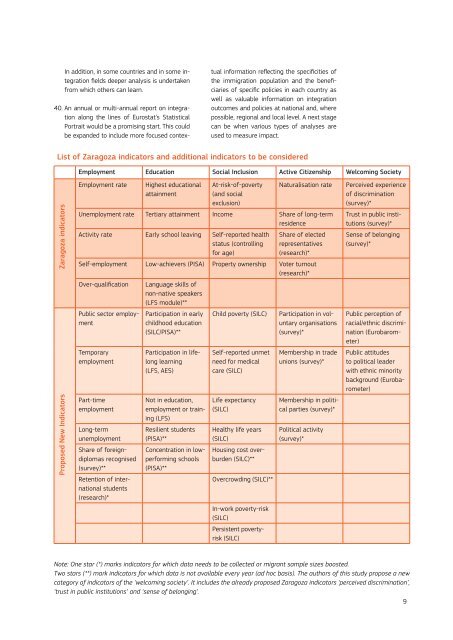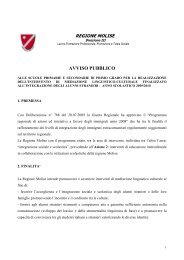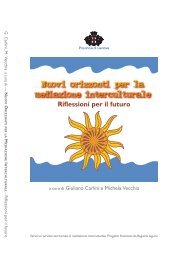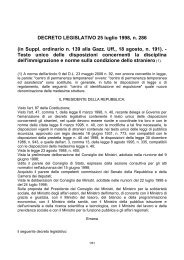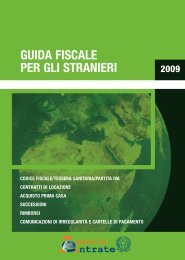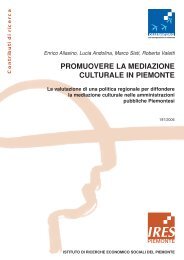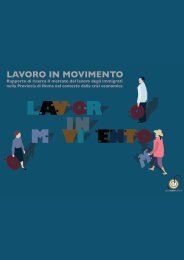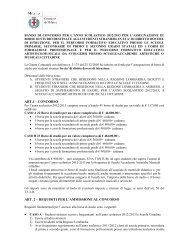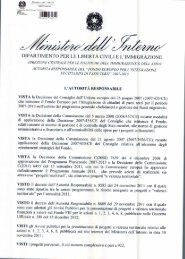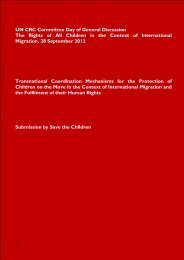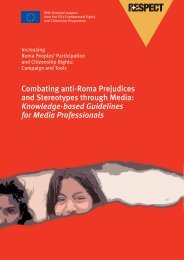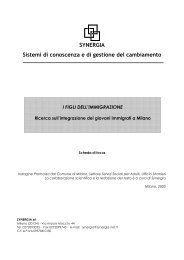Using EU Indicators of Immigrant Integration - European ...
Using EU Indicators of Immigrant Integration - European ...
Using EU Indicators of Immigrant Integration - European ...
- No tags were found...
You also want an ePaper? Increase the reach of your titles
YUMPU automatically turns print PDFs into web optimized ePapers that Google loves.
In addition, in some countries and in some integrationfields deeper analysis is undertakenfrom which others can learn.40. An annual or multi-annual report on integrationalong the lines <strong>of</strong> Eurostat’s StatisticalPortrait would be a promising start. This couldbe expanded to include more focused contextualinformation reflecting the specificities <strong>of</strong>the immigration population and the beneficiaries<strong>of</strong> specific policies in each country aswell as valuable information on integrationoutcomes and policies at national and, wherepossible, regional and local level. A next stagecan be when various types <strong>of</strong> analyses areused to measure impact.List <strong>of</strong> Zaragoza indicators and additional indicators to be consideredEmployment Education Social Inclusion Active Citizenship Welcoming SocietyZaragoza indicatorsProposed New <strong>Indicators</strong>Employment rateHighest educationalattainmentAt-risk-<strong>of</strong>-poverty(and socialexclusion)Naturalisation rateUnemployment rate Tertiary attainment Income Share <strong>of</strong> long-termresidenceActivity rate Early school leaving Self-reported healthstatus (controllingfor age)Share <strong>of</strong> electedrepresentatives(research)*Self-employment Low-achievers (PISA) Property ownership Voter turnout(research)*Over-qualification Language skills <strong>of</strong>non-native speakers(LFS module)**Public sector employmentTemporaryemploymentPart-timeemploymentLong-termunemploymentShare <strong>of</strong> foreigndiplomasrecognised(survey)**Retention <strong>of</strong> internationalstudents(research)*Participation in earlychildhood education(SILC/PISA)**Participation in lifelonglearning(LFS, AES)Not in education,employment or training(LFS)Resilient students(PISA)**Concentration in lowperformingschools(PISA)**Child poverty (SILC)Self-reported unmetneed for medicalcare (SILC)Life expectancy(SILC)Healthy life years(SILC)Housing cost overburden(SILC)**Overcrowding (SILC)**In-work poverty-risk(SILC)Persistent povertyrisk(SILC)Participation in voluntaryorganisations(survey)*Membership in tradeunions (survey)*Membership in politicalparties (survey)*Political activity(survey)*Perceived experience<strong>of</strong> discrimination(survey)*Trust in public institutions(survey)*Sense <strong>of</strong> belonging(survey)*Public perception <strong>of</strong>racial/ethnic discrimination(Eurobarometer)Public attitudesto political leaderwith ethnic minoritybackground (Eurobarometer)Note: One star (*) marks indicators for which data needs to be collected or migrant sample sizes boosted.Two stars (**) mark indicators for which data is not available every year (ad hoc basis). The authors <strong>of</strong> this study propose a newcategory <strong>of</strong> indicators <strong>of</strong> the ‘welcoming society’. It includes the already proposed Zaragoza indicators ‘perceived discrimination’,‘trust in public institutions’ and ‘sense <strong>of</strong> belonging’.9


